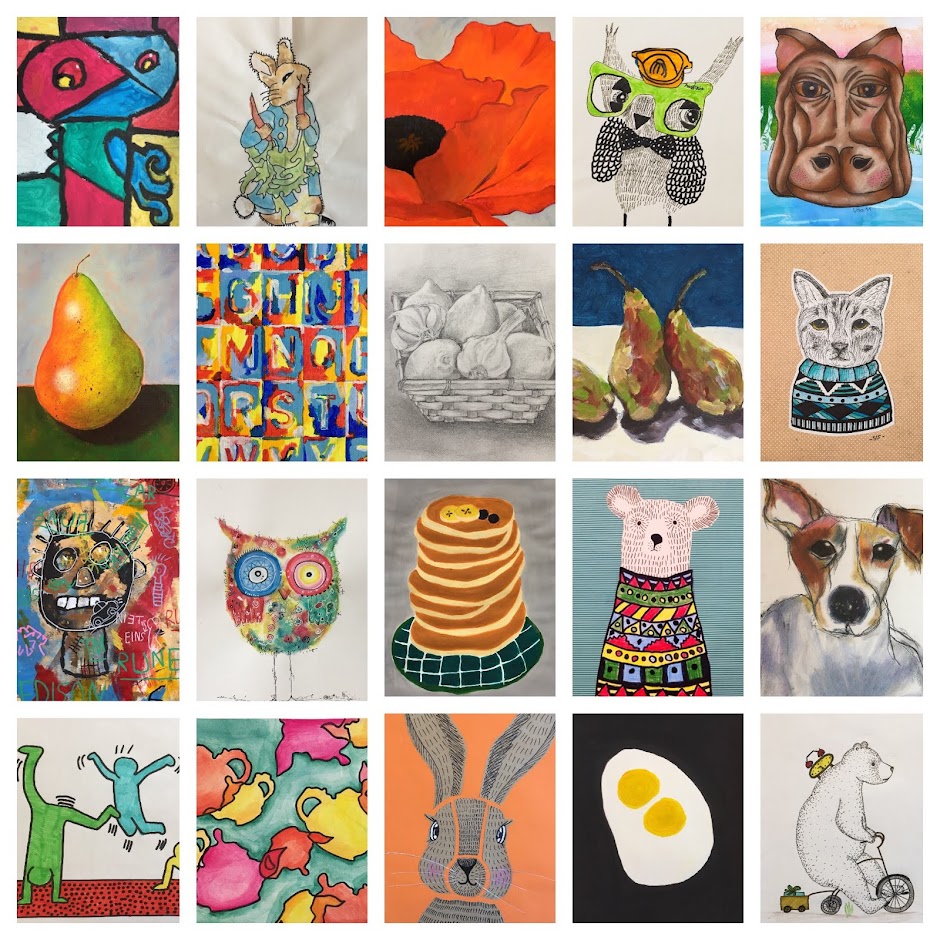This was a multi-step process project which took us two lessons to complete.
Week 1: We drew a horizon line on our 30x40 cm multi-medium paper with pencil, and painted everything above it with red acrylic paint. Next, we layed down rows of square collage paper, glueing each down with gel medium underneath and again over top to seal it. I had precut these squares from old book paper, music paper and painted paper, ensuring there is a variety of text size, shape and pattern. Students were encouraged to think about variety and balance when choosing and collaging their squares. Then we created a green acrylic wash by adding lots of water to our green acrylic paint, and painted over the squares to make it look like grass. We wanted our paint to be transparent so we could still see through to the beautiful collage papers, so making that wash thin was important.
 |
| Painting the red sky |
Week 2: The next lesson we learned a new concept and new skills: negative space, and trace and transfer technique. We traced horse drawings using tracing paper, then turned these over and retraced our lines onto good paper. We were super neat and careful when cutting out our horses, being mindful to leave the 'negative space' in tact. Look at the precision of their cutting! Birch trees were made by painting two long, thin strips of paper with credit cards and black acrylic paint (or tempera). Just tap the edge of the credit card, which has some black paint on it, randomly along the strips of paper horizontally for that birch bark look. The kids loved this. We drew barns on red or orange construction paper with black fine liner, and cut these out. We created a sun/moon by tracing a yogurt lid onto old book paper and painted it in a wash of blue. We pasted all our elements together, mindful of composition.
At this point the kids have a solid understanding of the qualities, possibilities and characteristics of acrylic paint. They have a strong intuition towards recognizing contrast, variety, emphasis and balance. Amazing work, kids.
 |
| Teacher Sample |
 |
| Kids 8-14 |
 |
| Kids 7-9 |





















